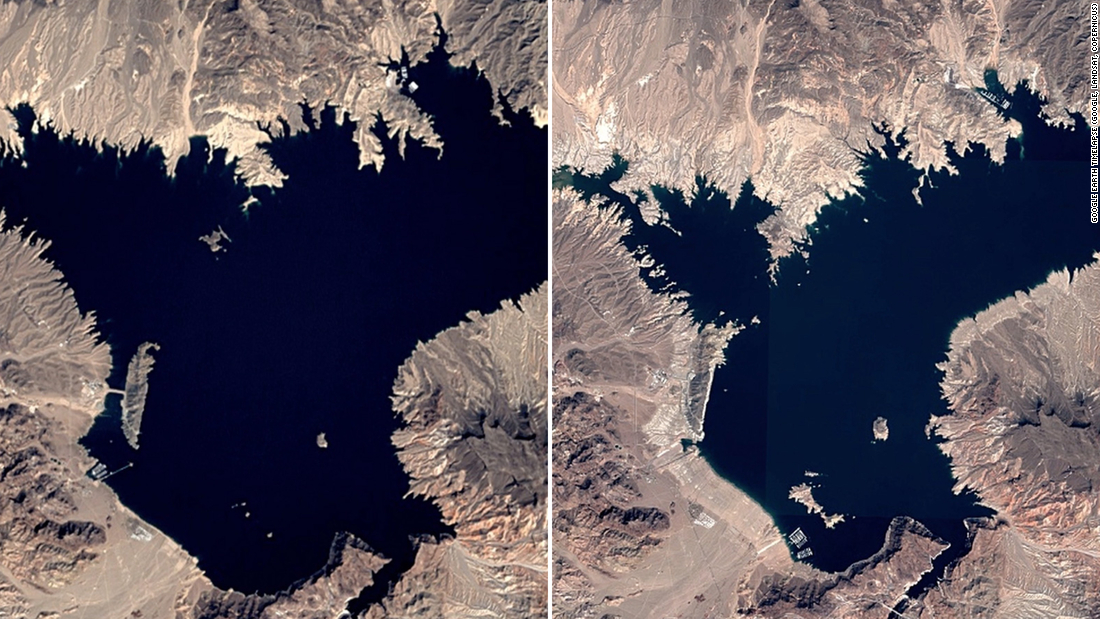Stories are popping up of possible rationing, restrictions and looming standoffs between farmers and governments over the most precious natural resource
Stories are popping up across the West of possible rationing, coming restrictions and looming standoffs between farmers and the government over the most precious natural resource.
Standoff. To the north, there’s a sharp disagreement in Oregon between farmers cut off from water to irrigate their potatoes and federal officials trying to save an endangered species of fish.
The farmers set up shop in a tent outside the canal headgate and were all but threatening to break in and open the gates themselves, like they did 20 years ago.
The most visible and striking effect of the heat and drought is at Lake Mead, which is at its lowest levels since it was filled during construction of the Hoover Dam in the 1930s.
Less snowpack and more evaporation from hot temperatures have taken their toll over the course of decades to the point where its dropped more than 140 feet since 2000 and sits at not much more than a third of its capacity.
Now for an aside on the Hoover Dam, government spending and climate change.
The dam: Talk about an infrastructure project! President Joe Biden came to office promising a New Deal-level investment in infrastructure. That’ll be pared back by three quarters if he’s to get any Republican help passing it,
Government spending: The latest bipartisan proposal includes $5 billion to help address the Western water shortage, although larger pots of money are meant to improve water and power infrastructure; the dam, with less water behind it, is producing less energy.
Climate change: But while lawmakers are happy to find a way to spend money on infrastructure as long as they don’t raise taxes, there’s zero agreement with Republicans to do anything directly about climate change, which is helping this drought along. Democrats may try to go it alone and pass a much larger infrastructure bill that seeks to address climate change, but it’s not clear they’ll have the votes.
The 2000 vs. 2021 image comparison is incredible.
Remember, 40 million people living across seven Western states and Mexico get their water from the Colorado River system.
The current drought map shows the 88% of the Western part of the country in some shade of red and the East almost entirely unfazed.
The upcoming rainfall outlook is just as grim, suggesting there will be no relief out West. And a look at stream and river flow demonstrates a lack of water moving across the region.
Decades of drought. The Intermountain West — between the Rockies, the Cascades and the Sierra Nevada Mountains — has technically been in a drought for decades, since 2000. It’s a vicious cycle: Hot weather leads to drought, and drought leads to hot weather.
The criteria they list for “exceptional drought” in California is not far from apocalyptic:
- Fields are left fallow; orchards are removed; vegetable yields are low; honey harvest is small
- Fire season is very costly; number of fires and area burned are extensive
- Many recreational activities are affected
- Fish rescue and relocation begins; pine beetle infestation occurs; forest mortality is high; wetlands dry up; survival of native plants and animals is low; fewer wildflowers bloom; wildlife death is widespread; algae blooms appear
- Policy change; agriculture unemployment is high, food aid is needed
- Poor air quality affects health; greenhouse gas emissions increase as hydropower production decreases; West Nile Virus outbreaks rise
- Water shortages are widespread; surface water is depleted; federal irrigation water deliveries are extremely low; junior water rights are curtailed; water prices are extremely high; wells are dry, more and deeper wells are drilled; water quality is poor
That seems both a long way off as humans turn their attention toward using less water and finding new ways to capture it, store it and reuse it. But those far-fetched predictions seem all too close when the nation’s largest reservoir is literally drying up.
![]()


